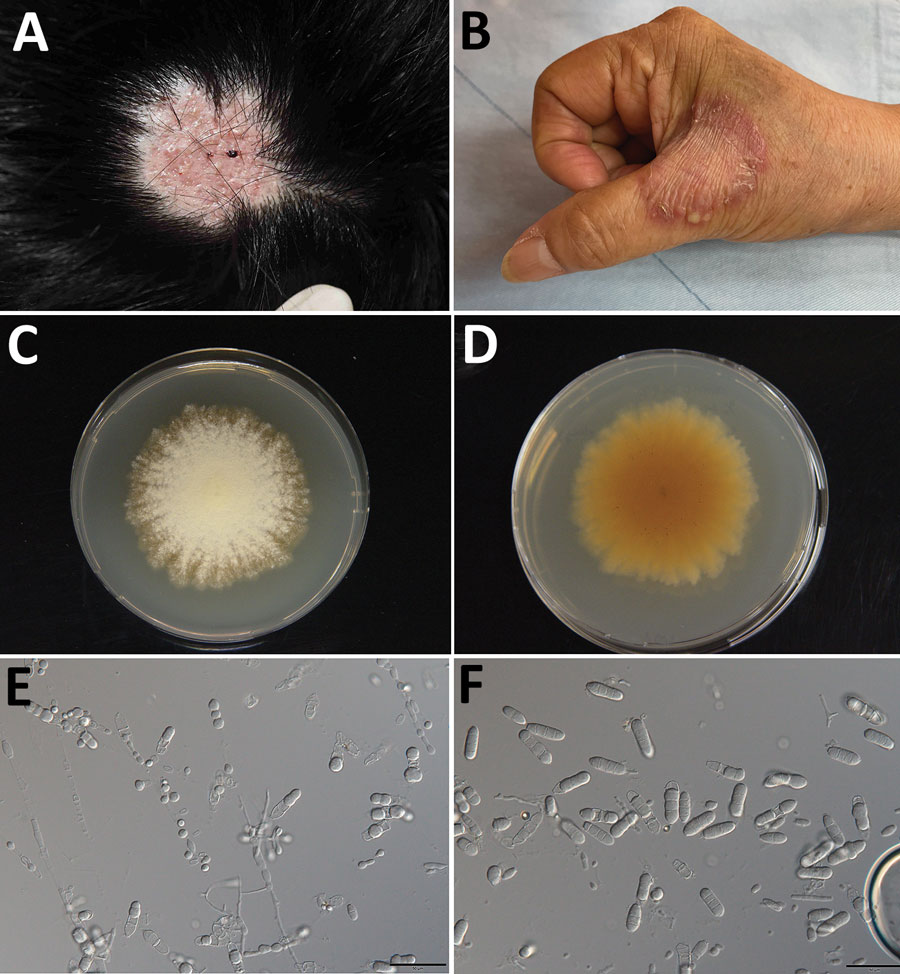Volume 29, Number 7—July 2023
Dispatch
Nannizzia polymorpha as Rare Cause of Skin Dermatophytosis
Figure 1

Figure 1. Clinical manifestations in 2 patients with rare cases of skin dermatophytosis caused by Nannizzia polymorpha. A) Case-patient 1, with tinea capitis; B) case-patient 2, with tinea manuum. C, D) The colony of isolate CGMHD 3492 isolated from case-patient 1 on potato dextrose agar obverse (C) and reverse (D). E, F) Microscopic features of microconidia (E) and macroconidia (F) (scale bars = 50 μm).
Page created: May 24, 2023
Page updated: June 22, 2023
Page reviewed: June 22, 2023
The conclusions, findings, and opinions expressed by authors contributing to this journal do not necessarily reflect the official position of the U.S. Department of Health and Human Services, the Public Health Service, the Centers for Disease Control and Prevention, or the authors' affiliated institutions. Use of trade names is for identification only and does not imply endorsement by any of the groups named above.